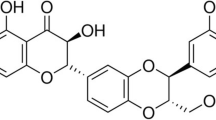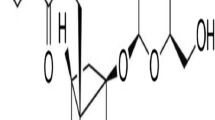Abstract
Post-traumatic stress disorder (PTSD) is a debilitating psychological disease that is triggered by traumatic events. It is known to cause various complications, including anxiety and depression. Umbelliferone (UMB) is a natural product of the coumarin family. This substance has been reported to exert antioxidant, anti-inflammatory, neuroprotective, and other biological effects. We used the open field test (OFT) and the forced swimming test (FST) to examine the effects of UMB on depression-like symptoms in rats after exposure to a single prolonged stress (SPS), which led to dysregulated activation of the serotonergic system. Male rats were given UMB (20, 40, or 60 mg/kg, intraperitoneal injection) once daily for 14 days after exposure to an SPS. Daily UMB administration significantly improved depression-like behaviors on the FST, increased the number of lines crossed in the central zone of the OFT, and reduced freezing behavior in both contextual and cued fear conditioning. UMB treatment attenuated the SPS-induced decrease in serotonin (5-HT) concentrations in the hippocampus and amygdala. The increased 5-HT concentration during UMB treatment was partially due to a decrease in the ratio of 5-hydroxyindoleacetic acid/5-HT in the hippocampus of rats with PTSD. According to our results, UMB has an antidepressant effect in rats exposed to an SPS, suggesting that this natural product of the coumarin family can be used to effectively treat PTSD.







Similar content being viewed by others
References
Ceremuga TE, Shellabarger P, Persson T, Fanning M, Galey P, Robinson D, Bertsch S, Ceremuga GA, Bentley M (2013) Effects of tetrahydropalmatine on post-traumatic stress disorder-induced changes in rat brain gene expression. J Integr Neurosci 12:513–528
Hopper JW, Frewen PA, van der Kolk BA, Lanius RA (2007) Neural correlates of reexperiencing, avoidance, and dissociation in PTSD: symptom dimensions and emotion dysregulation in responses to script-driven trauma imagery. J Trauma Stress 20:713–725
Kessler RC (2000) Posttraumatic stress disorder: the burden to the individual and to society. J Clin Psychiatry 61:4–12
Serova LI, Laukova M, Alaluf LG, Pucillo L, Sabban EL (2014) Intranasal neuropeptide Y reverses anxiety and depressive-like behavior impaired by single prolonged stress PTSD model. Eur Neuropsychopharmacol 24:142–147
Leskin LP, White PM (2007) Attentional networks reveal executive function deficits in posttraumatic stress disorder. Neuropsychology 21:275–284
Ravindran LN, Stein MB (2010) Pharmacotherapy of post-traumatic stress disorder. Curr Top Behav Neurosci 2:505–525
Khan S, Liberzon I (2004) Topiramate attenuates exaggerated acoustic startle in an animal model of PTSD. Psychopharmacology 172:225–229
Imanaka A, Morinobu S, Toki S, Yamawaki S (2006) Importance of early environment in the development of post-traumatic stress disorder-like behaviors. Behav Brain Res 173:129–137
Takahashi T, Morinobu S, Iwamoto Y, Yamawaki S (2006) Effect of paroxetine on enhanced contextual fear induced by single prolonged stress in rats. Psychopharmacology 189:165–173
Nie H, Peng Z, Lao N, Wang H, Chen Y, Fang Z, Hou W, Gao F, Li X, Xiong L, Tan Q (2014) Rosmarinic acid ameliorates PTSD-like symptoms in a rat model and promotes cell proliferation in the hippocampus. Prog Neuropsychopharmacol Biol Psychiatry 51:16–22
Lee B, Shim I, Lee H, Hahm DH (2018) Tetramethylpyrazine reverses anxiety-like behaviors in a rat model of post-traumatic stress disorder. Korean J Physiol Pharmacol 22:525–538
Escalona R, Canive JM, Calais LA, Davidson JR (2002) Fluvoxamine treatment in veterans with combat-related post-traumatic stress disorder. Depression Anxiety 15:29–33
Zhao D, Islam MN, Ahn BR, Jung HA, Kim BW, Choi JS (2012) In vitro antioxidant and anti-inflammatory activities of Angelica decursiva. Arch Pharm Res 35:179–192
Riveiro ME, De Kimpe N, Moglioni A, Vázquez R, Monczor F, Shayo C, Davio C (2010) Coumarins: old compounds with novel promising therapeutic perspectives. Curr Med Chem 17:1325–1338
Wu L, Wang X, Xu W, Farzaneh F, Xu R (2009) The structure and pharmacological functions of coumarins and their derivatives. Curr Med Chem 16:4236–4260
Barros TA, de Freitas LA, Filho JM, Nunes XP, Giulietti AM, de Souza GE, dos Santos RR, Soares MB, Villarreal CF (2010) Antinociceptive and anti-inflammatory properties of 7-hydroxycoumarin in experimental animal models: potential therapeutic for the control of inflammatory chronic pain. J Pharm Pharmacol 62:205–213
Ramesh B, Pugalendi KV (2005) Impact of umbelliferone on erythrocyte redox status in STZ-diabetic rats. Yale J Biol Med 78:133–140
Subramaniam SR, Ellis EM (2013) Neuroprotective effects of umbelliferone and esculetin in a mouse model of Parkinson's disease. J Neurosci Res 91:453–461
Vasconcelos JF, Teixeira MM, Barbosa-Filho JM, Agra MF, Nunes XP, Giulietti AM, Ribeiro-Dos-Santos R, Soares MB (2009) Effects of umbelliferone in a murine model of allergic airway inflammation. Eur J Pharmacol 609:126–131
Luo Y, Yin W, Signore AP, Zhang F, Hong Z, Wang S, Graham SH, Chen J (2006) Neuroprotection against focal ischemic brain injury by the peroxisome proliferator-activated receptor-gamma agonist rosiglitazone. J Neurochem 97:435–448
Wang X, Li R, Wang X, Fu Q, Ma S (2015) Umbelliferone ameliorates cerebral ischemia-reperfusion injury via upregulating the PPAR gamma expression and suppressing TXNIP/NLRP3 inflammasome. Neurosci Lett 600:182–187
Germoush MO, Othman SI, Al-Qaraawi MA, Al-Harbi HM, Hussein OE, Al-Basher G, Alotaibi MF, Elgebaly HA, Sandhu MA, Allam AA, Mahmoud AM (2018) Umbelliferone prevents oxidative stress, inflammation and hematological alterations, and modulates glutamate-nitric oxide-cGMP signaling in hyperammonemic rats. Biomed Pharmacother 102:392–402
Ji MH, Jia M, Zhang MQ, Liu WX, Xie ZC, Wang ZY, Yang JJ (2014) Dexmedetomidine alleviates anxiety-like behaviors and cognitive impairments in a rat model of post-traumatic stress disorder. Prog Neuropsychopharmacol Biol Psychiatry 54:284–288
Serova LI, Laukova M, Alaluf LG, Sabban EL (2013) Intranasal infusion of melanocortin receptor four (MC4R) antagonist to rats ameliorates development of depression and anxiety related symptoms induced by single prolonged stress. Behav Brain Res 250:139–147
Patki G, Li L, Allam F, Solanki N, Dao AT, Alkadhi K, Salim S (2014) Moderate treadmill exercise rescues anxiety and depression-like behavior as well as memory impairment in a rat model of posttraumatic stress disorder. Physiol Behav 130:47–53
Lee B, Sur B, Yeom M, Shim I, Lee H, Hahm DH (2014) L-tetrahydropalmatine ameliorates development of anxiety and depression-related symptoms induced by single prolonged stress in rats. Biomol Ther 22:213–222
Serova LI, Tillinger A, Alaluf LG, Laukova M, Keegan K, Sabban EL (2013) Single intranasal neuropeptide Y infusion attenuates development of PTSD-like symptoms to traumatic stress in rats. Neuroscience 236:298–312
Lin CC, Tung CS, Liu YP (2016) Escitalopram reversed the traumatic stress-induced depressed and anxiety-like symptoms but not the deficits of fear memory. Psychopharmacology 233:1135–1146
Geracioti TD Jr, Baker DG, Kasckow JW, Strawn JR, Jeffrey MJ, Dashevsky BA, Horn PS, Ekhator NN (2008) Effects of trauma-related audiovisual stimulation on cerebrospinal fluid norepinephrine and corticotropin-releasing hormone concentrations in post-traumatic stress disorder. Psychoneuroendocrinology 33:416–424
Davidson RJ, Putnam KM, Larson CL (2000) Dysfunction in the neural circuitry of emotion regulation—a possible prelude to violence. Science 289:591–594
Detke MJ, Rickels M, Lucki I (1995) Active behaviors in the rat forced swimming test differentially produced by serotonergic and noradrenergic antidepressants. Psychopharmacology 121:66–72
Geracioti TD Jr, Baker DG, Ekhator NN, West SA, Hill KK, Bruce AB, Schmidt D, Rounds-Kugler B, Yehuda R, Keck PE Jr, Kasckow JW (2001) CSF norepinephrine concentrations in posttraumatic stress disorder. Am J Psychiatry 158:1227–1230
Zhang GQ, Yang JX, Zhang YQ, Liang X, Hu M, Fan J (2014) Altered neurotransmitter levels with post-traumatic stress disorder. Turk Neurosurg 24:844–848
Wu ZM, Ni GL, Shao AM, Cui R (2017) Genistein alleviates anxiety-like behaviors in post traumatic stress disorder model through enhancing serotonergic transmission in the amygdala. Psychiatry Res 255:287–291
Lin CC, Tung CS, Lin PH, Huang CL, Liu YP (2016) Traumatic stress causes distinctive effects on fear circuit catecholamines and the fear extinction profile in a rodent model of posttraumatic stress disorder. Eur Neuropsychopharmacol 26:1484–1495
Miao YL, Guo WZ, Shi WZ, Fang WW, Liu Y, Liu J, Li BW, Wu W, Li YF (2014) Midazolam ameliorates the behavior deficits of a rat posttraumatic stress disorder model through dual 18 kDa translocator protein and central benzodiazepine receptor and neurosteroidogenesis. PLoS ONE 9:e101450
Acknowledgements
This research was supported by a Grant from the National Research Foundation of Korea funded by the Korean Government (2016R1D1A1A09917012).
Author information
Authors and Affiliations
Corresponding author
Ethics declarations
Conflict of interest
The authors declare no potential conflicts of interests.
Additional information
Publisher's Note
Springer Nature remains neutral with regard to jurisdictional claims in published maps and institutional affiliations.
Rights and permissions
About this article
Cite this article
Lee, B., Yeom, M., Shim, I. et al. Umbelliferone modulates depression-like symptoms by altering monoamines in a rat post-traumatic stress disorder model. J Nat Med 74, 377–386 (2020). https://doi.org/10.1007/s11418-019-01373-w
Received:
Accepted:
Published:
Issue Date:
DOI: https://doi.org/10.1007/s11418-019-01373-w




